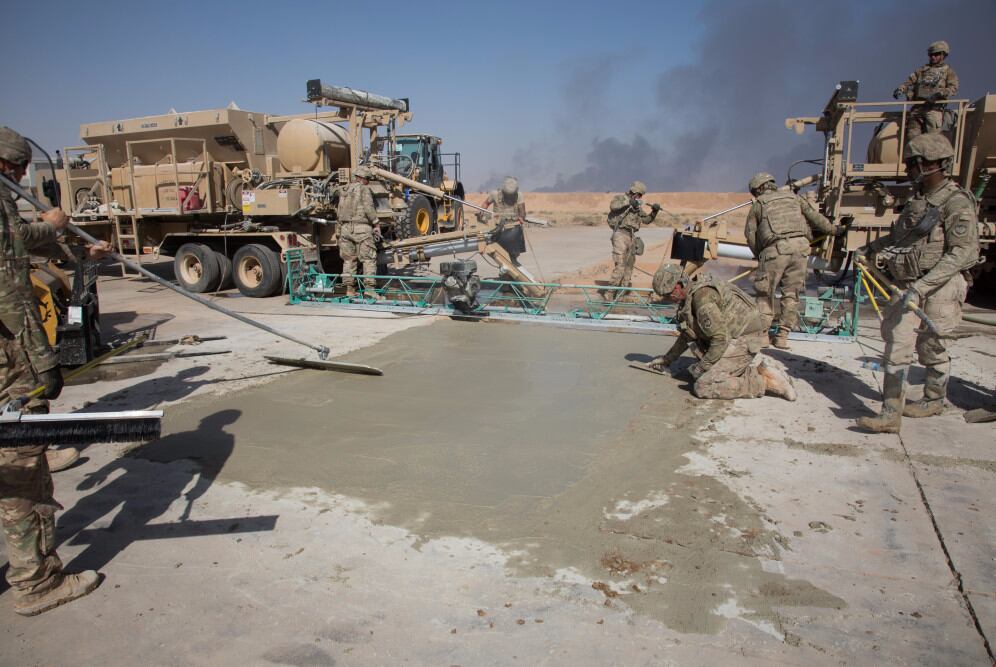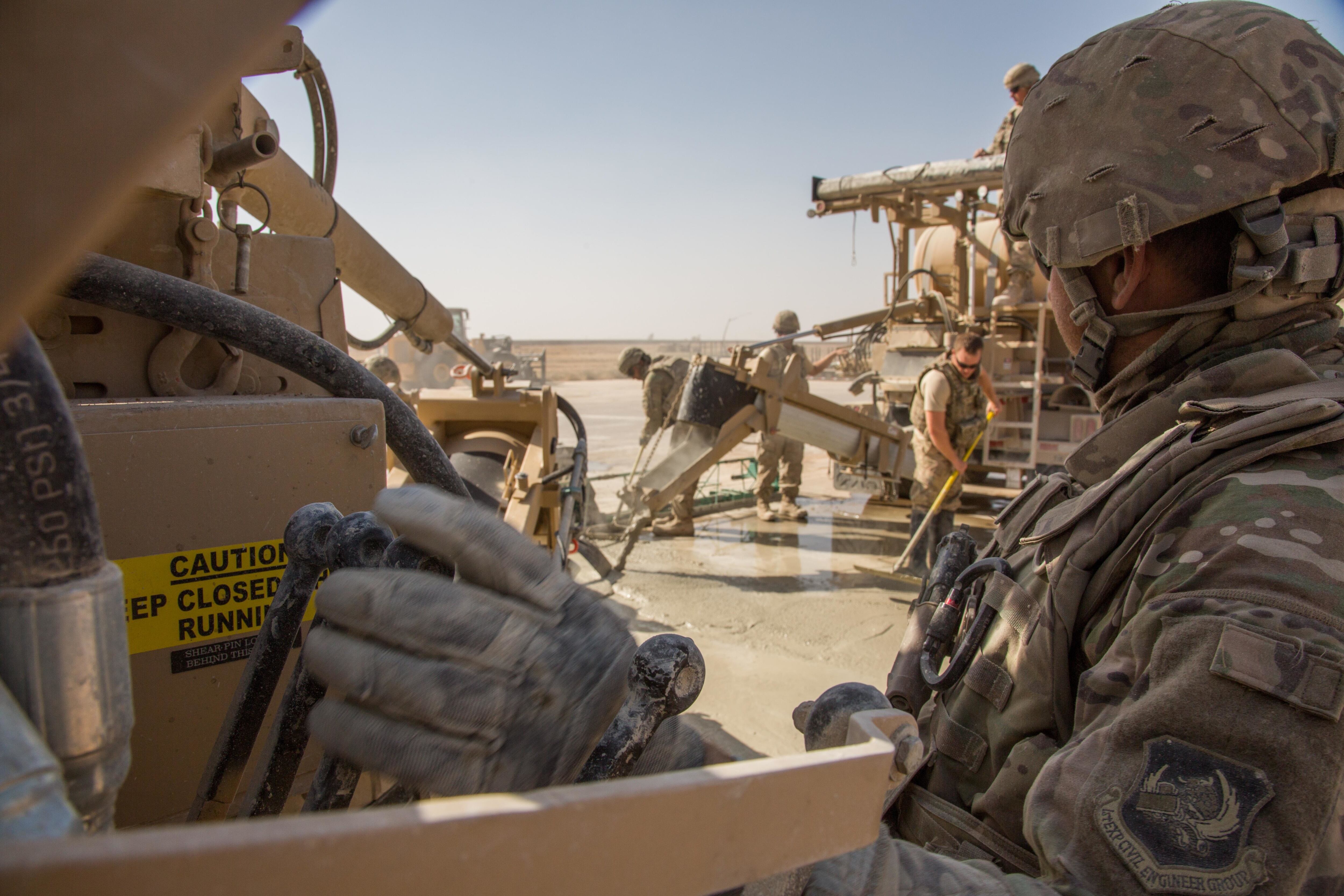When Islamic State militants destroyed the Qayyarah West Airfield in Iraq, they didn’t count on the Air Force repairing and reopening it in three weeks.
Airmen operating missions out of Qayyarah, referred to as Q-West, and an undisclosed airfield in northern Syria provide support in the fight against ISIS.
Almost 200 airmen worked on both missions in Iraq and Syria from October 2016 to February 2017, but seven stood out for their leadership:
- Lt. Col. Blaine Baker – Iraq
- Col. Rhett Champagne – Iraq
- Maj. Jacob Becker – Iraq
- Chief Master Sgt. Ricky Smith – Iraq
- Lt. Col. Robert Rayner – Syria
- Capt. Andrew Schnell – Syria
- Senior Master Sgt. Christopher Wright – Syria
These airmen from the 621st Contingency Response Wing received the Bronze Star Medal during a ceremony at Joint Base McGuire-Dix-Lakehurst in New Jersey on Nov. 21.
“There’s a lot of deserving folks out there, but these seven were specifically highlighted by not only folks in the field that were teamed with them, but also leadership back in the States,” Maj. Gen. Christopher Bence, U.S. Air Force Expeditionary Center commander, told Air Force Times.
Q-West
ISIS militants had occupied the Qayyarah West Airfield, south of Mosul, for two years when Iraqi forces pushed them out in July 2016, but an obliterated and unusable runway was left behind.
“Before [ISIS] left, they did everything in their power to make the airfield unusable,” Bence said, adding that they trenched holes through the concrete of the runway and set up booby-trapped explosives.
“What they did not anticipate was our forces coming in there and partnering with some engineering forces and opening that airfield up,” he said.
RELATED

Lt. Col. Blaine Baker, who was the contingency response element commander, said before his team arrived, a civil engineer group did heavy repairs on the runway and taxiways.
“Within 24 hours of the concrete drying, we set up operations with air traffic controllers and made sure we set up the landing zone so it could accommodate aircraft covertly,” said Baker, who’s stationed at Travis Air Force Base in California.
The airfield was used to bring critical supplies in the fight against ISIS in Mosul, he said.
“We knew based on the location of the airfield, which is just under 30 miles from Mosul, that it was very strategic in terms of a logistics platform and strike platform, as well as train, advise and assist missions that were going on as well,” Baker told Air Force Times.
Baker was there for just over 100 days, and by the time he and his group left, they had helped bring in more than 340 heavy fixed-wing aircraft. Adding Iraqi rotary wing and light aircraft that came through, more than 2,000 aircraft used the airfield.
When Baker, who has been in the Air Force for 17 years, found out he was receiving a Bronze Star, he was immediately humbled.
“That medal is representative of the blood and sweat that our airmen put into the mission at Q-West,” he said. “It’s humbling but also a representation of all the fantastic work that all the airmen did that I had the privilege to lead while I was out there.”
The most rewarding part for Baker was seeing Mosul officially liberated.
“At the end of the day, that’s what our mission is,” Baker said. “We open airfields and air bases, and we were successful in our mission, but that was to an end, and that end was to support the coalition liberating Mosul.”
RELATED

Syria
Airmen took an unprepared location in northern Syria and opened a landing zone where supplies could be received in the middle of the night under the cloak of darkness.
Bence said improvements were made to what was basically a dirt strip in the desert to land C-130s but also C-17s, which tripled the amount of cargo per landing.
“It greatly increased the operations,” he said.
Charlsy is a Reporter and Engagement Manager for Military Times. Email her at cpanzino@militarytimes.com.





